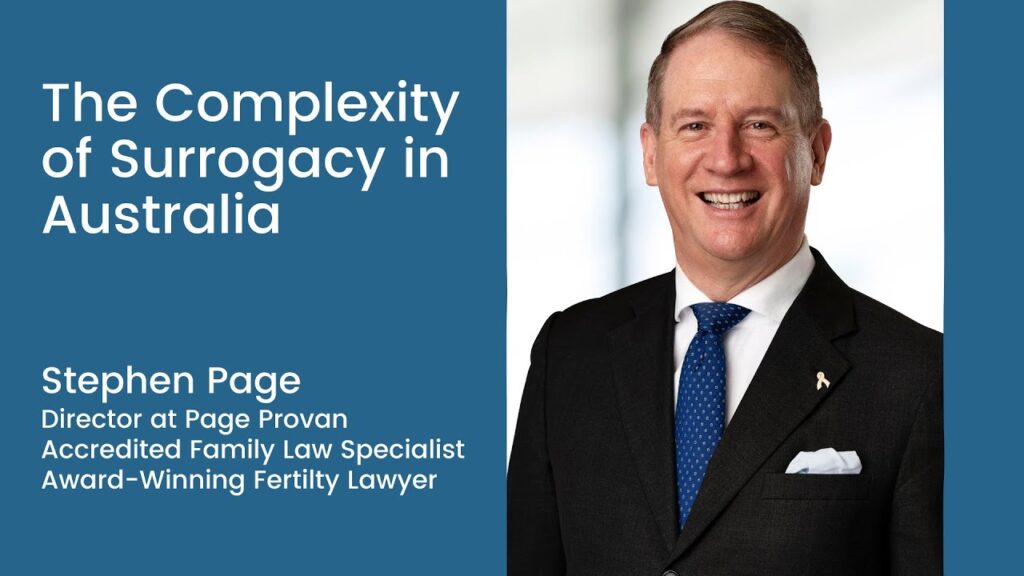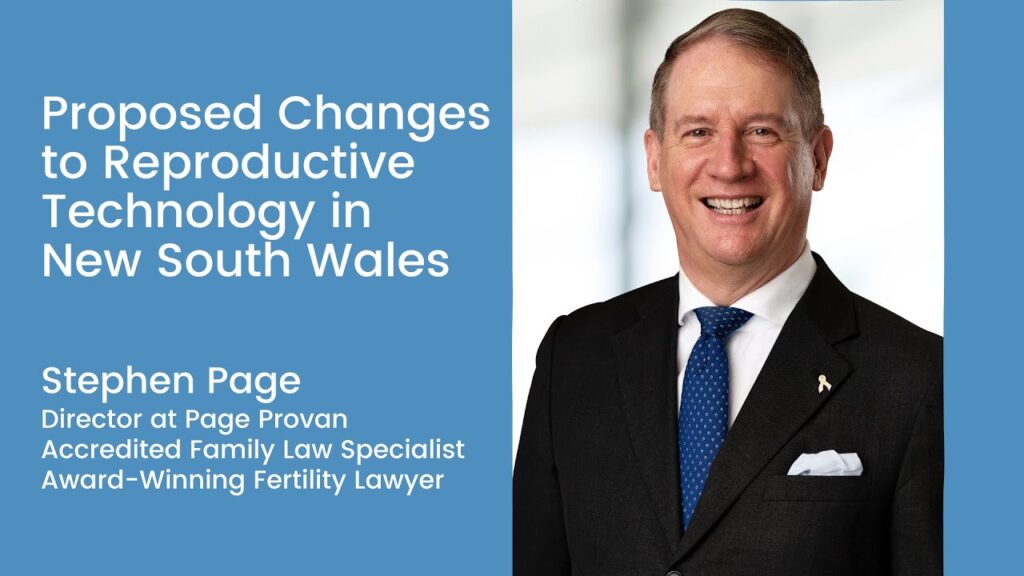Superannuation referable to the Marriage Period
 Peter Skinner
Peter Skinner
By Peter Skinner
COMMENT by Stephen Page: Peter Skinner is a well-known superannuation guru. The article is published with his kind permission, and contains interesting food for thought.
Superannuation Referable to the Marriage Period
When representing the superannuation member, practitioners need to be aware that it is always in their clientʼs best interest to address the super-annuation that is referable to the marriage period. This is arguably one of the most neglected areas in family law and superannuation. This article offers an alternative to negotiating purely on the basis of the superannuationʼs current value. What is outlined is a neutral solution, which favours neither the husband nor the wife. Not to use this approach will place one of the parties in detriment. Make sure that it is not your client!
Why Superannuation is Different
Superannuation can be thought of as a form of deferred pay and tax effective savings. The significant tax concessions come at a cost, as superannuation, with few exceptions, cannot beaccessed until retirement. However, it is more than just the access restrictions that differenti-ate superannuation from other assets. It is also different in that it can be valued on a daily basisand contributions can be made as frequently as each pay day. The contributions are for the memberʼs benefit and can be made by the member, his or her employer, or by the Government subject to an income limit. It is no surprise that Coghlan (2005)FamCA 429 – C & C) found that superannuation differed from other asset classes.The Full Court case of McCulough [2006] FamCA 840 reinforced the now well established practice of treating superannuation as a separate asset class.
The two pool approach to assets makes a lot of sense. Taxation treatment, access, contributions by Government, employers and individuals and the compensation aspects of superannuation in the event of invalidity and death, all differentiate superannuation from so called “real” assets. The superannuation asset should be thought of as comprising 3 distinct elements
– that which was bought into the marriage,
– contributions during the marriage and
– post separation contributions.
What is being included in the asset pool is the middle portion, i.e. that which relates to the marriage period. The exclusions are at each end, the pre-marital and post marital contributions.
Post Separation Contributions
There is always a time difference between date of separation and finalisation of the property settlement. In some cases, it can be a number of years. Irrespective of the time, there is a neutral solution that provides an alternative to the use of the current value. A common argument for using the current value of the superannuation interest is that the other side has an offsetting claim. The offset could be looking after children, suffering from a medical condition, and the like. What this does is combine contribution arguments with 75(2) considerations. Superannuation lends itself to quantification.
First and foremost, the facts should be established. Then, 75(2) adjustments can be made as appropriate. The success of this approach is, of course, dependent on a neutral solution being established and the methodology now follows. The post separation solution that will favour neither party is to split the superannuation as at the date of separation and give the non-member spouse the interest on the agreed baseamount from that date. This puts the spouse in the same position he or she would have been in had it been possible to split the superannuation as at the date of separation. The non-member would have exactly the same interest allocated from date of separation.
On the other hand, this solution excludes all post separation contributions made by the member.The interest that is payable to the non-member depends on the superannuation plan. Accumulation plans are straight forward being the interest that the member actually received. The interest arrangements in defined benefit plans will depend on whether the trustee has allowed for separate interests to be created. If they have, the interest mechanism will be specified in the scheme rules. If no separate interest is allowed,the Family Law (Superannuation) Regulations 2001 mandate that the non-member has the base amount adjusted by AWOTE (a wage in-dex) plus 2.5%. The precedent case that supports the above approach to superannuation splitting is [2006] FMCAfam449.
The post separation treatment of superannua-tion is relatively straightforward. It is very similar to the circumstance where one party remains in the family home post separation and that person funds, say, a new garage. That garage would be viewed as post separation contributions.
Superannuation Referable to the Marriage Period & Pre –Marriage Contributions
Where membership of the superannuation plan commenced after marriage, superannuation referable to the marriage period is simply the family law value as at the end of the marriage.Where membership of the superannuation plan commenced before marriage, it is necessary to determine the amount of superannuation brought into the marriage in order to properly calculate what has been accumulated during the marriage.
Case Law
The process adopted for determining the quan-tum of superannuation referable to marriage is in direct response to two themes derived from recent family law superannuation cases.The first is that judges in family law cases have commented on the absence of any evidence on the value of any superannuation at the marriagedate. The second is the inappropriateness of a formulaic approach – which is the only option where the evidence referred to above is absent!Examples of cases where the lack of evidence was raised are:
• Justice Wattʼs in his first major superannuation case (2006_FamCA-207 T & T) at paragraph 153 observed; “There is no evidence before me as to the value of the superannuation fund as at the date ofmarriage.”
• The trial Judge, reported in M & M [2006]FamCA 913 at paragraph 89, stated, “There do not appear to be any figures available to enable the Court to quantify the husbandʼs contributions…”
The family law value at the marriage date is the primary evidence as to the superannuationʼs value at that date. The family law value as at the date of separation is the other primary evidence to determine the amount of superannuation referable to the marriage period. The approach adopted in determining the amount referable to the marriage is, therefore, to estab-lish the superannuation facts through calculat-ing family law values at the two critical dates thereby avoiding any reliance on formulae.
The Old Formula Approach – What is it?
From M & M at paragraph 113, “Prior to the introduction of Part VIIIB into the Act, it appears to have been common amongst some lawyers to use that formula to quantify the ʻvalueʼ of su-perannuation and to include the figure so ar-rived at, in the pool, as if it were property of the parties. In our view the ratio of West and Green was of narrow compass and may have been accorded an interpretation it did not warrant.”The West and Green formula simply applied theratio of the time in marriage to the time in the superannuation fund to the value of the super-annuation interest in order to derive the amount referable to the marriage. It is a rough and ready approach but is the only one available in the absence of family law values at the critical dates.
The Full Court case of M & M left no doubt that West and Green is not appropriate as shown by paragraph 116 below:“There should, in our view, be no doubt since the introduction of Part VIIIB, that there is no longer any need to make orders of the kind made in West and Green nor to use the so called formula to arrive at a value for superannuation entitlements as the amendments occa-sioned by Part VIIIB enable the Court to make splitting orders and the Regulations provide a method of valuation.” In other words, primary evidence needs to be derived from family law values.
The next issue to consider is whether case law sup-ports the view that the period of marriage is a relevant consideration.In C & C, the majority specifically said (at para-graph 66) that in the context of considering con-tributions (as well as the other factors in Section 79(4)) the following matters may well be relevant:
1. The relationship between years of fund membership and cohabitation;
2. The actual contributions made by the fund member at the commencement of cohabitation (if applicable), at separation and at the date of hearing;
Therefore, it is a relevant consideration to examine the superannuation referable to the marriage period.
The Method
The method for determining the amount of superannuation referable to the marriage period is to ascertain the family law value (FLV) at the critical dates, i.e. the date of marriage/cohabitation and the date of separation. There is only one adjustment that is required and that is to create a common currency between these two FLVs. With the two FLVs expressed in the same price basis, the difference represents the quantum of superannuation referable to the marriage period.
Adjusting the FLV at Marriage Date
The FLV at date of marriage reflects the salary at that time as well as the price levels of the time, which are materially different from those atthe date of separation. Because of the signifi-cant time that has elapsed between date of marriage and date of separation, it is necessaryto take inflation into account. In economics, thenominal value is the value expressed in the money of the day, versus the real value, which includes the effect of inflation.
Nominal values such as the FLV at marriage date do not specify how much of any difference is from changes in the price level. Real values convert the nominalvalues as if the prices were constant in each year. Any difference in the real value is then attributed to the growth in the superannuation interest due solely to the contributions made in the relevant period.
The concept is best illustrated through the price of petrol. The following graph shows the real and nominal price in US dollars with oil shock and the recent price rises clearly shown.The price of Australian petrol has risen from 11cpl in 1970, to 32cpl in 1980, to 51cpl in 1982 to 69cpl in 1994. In real terms, the 1982 price is $1.46cpl – about the same real price as at the beginning of 2008. Without taking inflation into account, it is not possible to make sense of past prices. This illustrates the need to take inflation into account when comparing the FLV at time of marriage against the FLV at separation. What is bought into the marriage needs to be expressed in real terms. This allows the actual increase in the value of superannuation by vir-tue of contributions and earnings to be allocatedto both parties.The adjustment mechanism is the consumer price index (CPI). Use of the CPI to represent real values is not only universal but is also the most conservative. If a wage index was used, for example, the resulting difference would bemuch less and would represent more than just changes in the price level. The adjusted FLV accurately represents that component of the superannuation that had been brought into the marriage but expressed in the same price level as at date of separation.Once the amount referable to the marriage has been established, it can then be apportioned between the parties. The facts on the superan-nuation are established and the next apportionment can reflect the 75(2) considerations to ensure that a just and equitable outcome is derived. As this depends on considerations be-yond superannuation, a range of possible percentage splits can be derived, as appropriate.Finally, the base amount is adjusted to take intoconsideration the interest that is payable to the non-member spouse from the date of separa-tion, as previously discussed.ConclusionSuperannuation is different from other assets in many ways. One way that it is different is its ability to be quantified and segmented into pre and post marriage. The above approach gives a solution that does not favour either party and is more accurate than working from the current value of superannuation.












